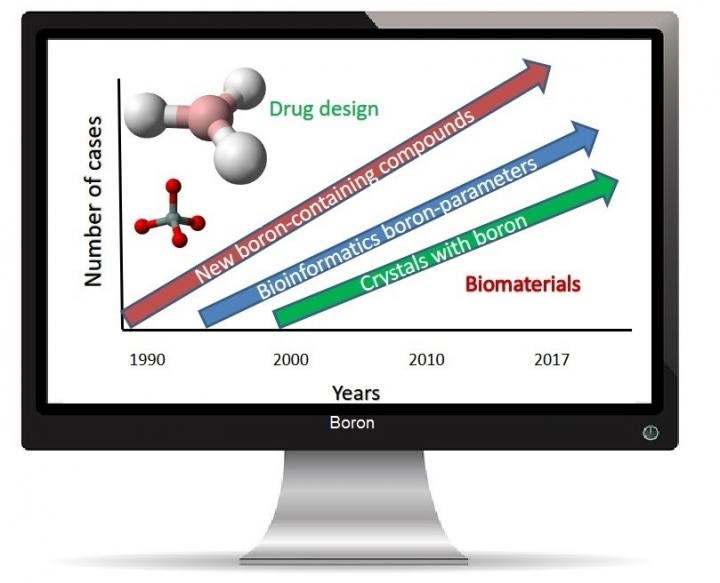May 2 2017
 The interest for developing boron-containing compounds as drugs is increasing after some successful cases. This review investigates the scope of bioinformatics to facilitate computer-aided drug design as well as the technical limitations in this field. CREDIT: Marvin Antonio Soriano et al.
The interest for developing boron-containing compounds as drugs is increasing after some successful cases. This review investigates the scope of bioinformatics to facilitate computer-aided drug design as well as the technical limitations in this field. CREDIT: Marvin Antonio Soriano et al.
Investigations on boron-containing compounds (BCCs) have remarkably grown in medicinal chemistry in the past years. BCCs have been used to treat many maladies, and there have been a few successful cases of using BCCs in treating infectious diseases and cancer.
Being a regular and effective methodology for drug design and materials science, bioinformatics tools are anticipated to be largely applied for the research into BCCs. This can be evidently understood from the advancement of BCCs for application in the medical field.
Information related to the application of computational technology to analyze the chemical-biological effects of BCCs - either from drug development strategies or natural sources - is consolidated here.
A wide array of computational techniques enables pharmacochemical investigation of BCCs. A major portion of these techniques are centered on the basis of an experimental occurrence, the crucial parameters of a boron atom, and the shared pharmacokinetics, pharmacodynamics, or toxic effects of components of a class of BCCs. Here, the information related to pioneering developments and specific researches on interatomic interactions between boron and any element in organic chemistry, also including the biological effects of BCCs, is narrated.
Certain research works have investigated the characteristics of the boron atom in molecules for designing biomaterials and drugs. Yet other studies have strived to recognize the optimum quantitative structure-activity relationship for a particular target. Yet, the application of boron in theoretical assays has been restricted due to the lack of certain theoretical and experimental data limit.
An ultimate comment on the potential impact of developments in bioinformatics on BCC research has been given here. The prospects of innovative developments in bioinformatics used for analyzing BCCs will enable an in-depth knowledge of not only the electromagnetic behavior of the boron atom but also the biochemical behavior of molecules in its structure under environmental conditions that are suitable for interactions that initiate biological effects.
The lack of specific parameters of boron related to biological effects on in silico assays, elemental characteristics, or parameters related to its characteristics in an organometallic molecule offer a great opportunity for international research teams investigating the BCCs.